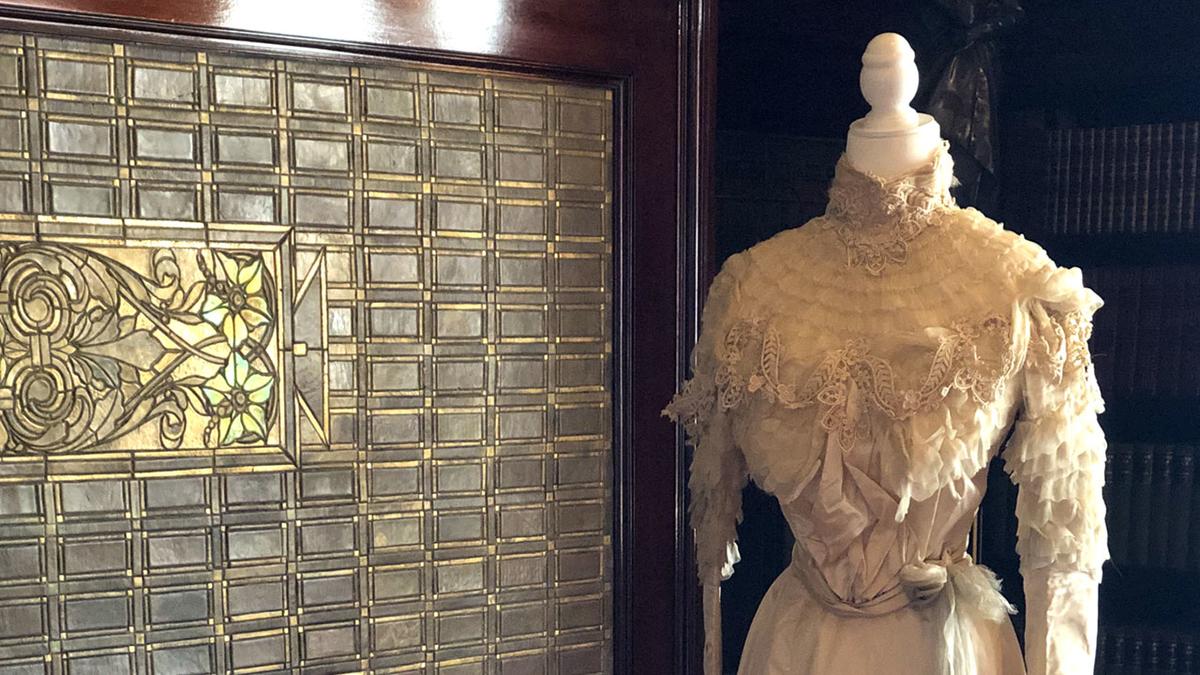The "Gowns of Glensheen" exhibit opens on Friday, June 14. The exhibit includes first-class gowns, party dresses, and fur coats displayed among the stunning interiors of the 39-room mansion. The gowns in the exhibit have been in the drawers of the Glensheen collection for years and are making their long-awaited debut to the public this summer.
The exhibit will be available daily for tour guests during regular tour hours through Labor Day, September 2, 2019. The exhibit is included in guest’s tour price for no additional fee.
Extended summer tour hours begin July 1 and run through August 24: Sunday–Thursday from 9 a.m.–7 p.m. Friday & Saturday from 9 am–8 p.m.
A "Gowns of Glensheen" dossier will help guide guests through the mansion while detailing dresses and telling stories of the time along the way. The dossier includes excerpts from Clara Congdon’s diary and knowledge nuggets such as explaining the process of how silk is made (it’s basically worm spit). Or how many rhinestones and beads are on a dress (one dress has 15,278 rhinestones and beads on it). Guests will also learn about the dressing process women underwent and the layers of undergarments worn to achieve a waist as tiny as 18 inches.
While Glensheen doesn’t have photographic proof that all of the dresses were worn by the Congdon women, they do have proof that Congdon women wore a few. For example, there is a photo of Clara Congdon in the Master Bedroom wearing the dress she wore to her son’s wedding in 1914. The photo is on display for the exhibit. In addition to gowns, guests will also see coats made of the same fur worn by kings and a tux of Chester Congdon’s.
One of the ways research for the "Gowns of Glensheen" was completed was by diving into Duluth News Tribune archives. While weddings are a big deal today, weddings were once reported as full articles in the daily newspaper, often on "society" pages. There were even articles about when prominent families (like the Congdons) picked a wedding date or went shopping for their wedding dress. Historic Duluth News Tribune articles also often mention Glensheen hosting teas, benefits, and even dance parties.
Many of the fabrics or embellishments on the pieces in this exhibit are made from animal fur or feathers. One dress even has ostrich feathers. During this time, it was very common that luxury clothing incorporated these. Feathers were so coveted for fashion that some birds were hunted almost to the point of extinction, leading the U.S. and Canada to sign the Migratory Bird Treaty Act in 1918. The Act, still in effect, protected feathers, eggs, and nests and made it illegal to trap, kill, possess, sell, or harass migratory birds.
Learn more about Glensheen and order tickets.
